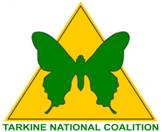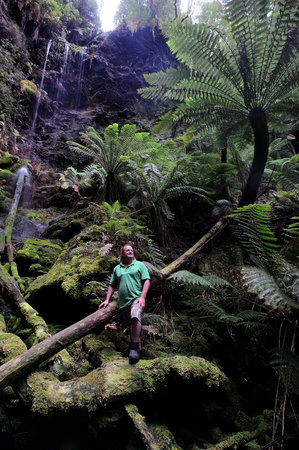Road Threat to Tasmania’s Tarkine Wilderness
Tarkine National Coalition (TNC) has questioned the motives behind the watering down of the EPBC assessment approach to the Tarkine Road proposal in Tasmania.
The Federal Environment Minister Tony Burke has opted for the less stringent Public Environment Report approach despite the original Tarkine Road proposal being subject to an Environmental Impact Statement approach prior to it’s withdrawal. This comes on top of the Minister’s refusal to National Heritage List the area despite the former proposal triggering a Emergency National Heritage Listing in 2009 by former minister Peter Garrett (lapsed by Minister Burke in 2010).
“There are some questions here that the Minister must answer. Clearly the revise Tarkine Road proposal is not being subjected to the same scrutiny as the original proposal, at a time when the risks to the area are even better understood than in 2009,” said Tarkine National Coalition spokesperson Scott Jordan.
The resubmitting of the Tarkine Road proposal by the Tasmanian Government called into play a promise made by Minister Burke in December 2010 that if the Tarkine Road was resubmitted, that he would immediately re-list the Tarkine. The Minister failed to deliver on that promise.
TNC has maintained conditional support for the revised project, subject to the altered route, staging of the project sections and there being demonstrable evidence that proposed mitigation measures address the expected increase in roadkill of Tasmanian devil and Spotted tailed quoll normally seen with road sealing. So far no mitigation trials have been conducted and that evidence does not exist.
“The lowering of the bar doesn’t make sense given that the state government is increasing it’s efforts to reduce the impact of the road. I suspect pressure is coming from other sources”.
“In my estimation, the lowering of the assessment approach has less to do with the alterations to the route, but the fact that a mining company now needs this route for transporting product to ports”.
 .
.
‘Few understand how much transport influences land use patterns. Transport leads land use. Once an expressway or railway is built, it is easy to change the zoning and development laws to increase the population along the corridor.’
[Source: Then New South Wales Minister for Planning, Frank Sartor, Sydney Morning Herald, 20080929, p11].
‘A road desecrates wilderness
and enslaves wildness’
~ Editor
.
.
Tags: a road desecrates wilderness and enslaves wildness, tarkine road










